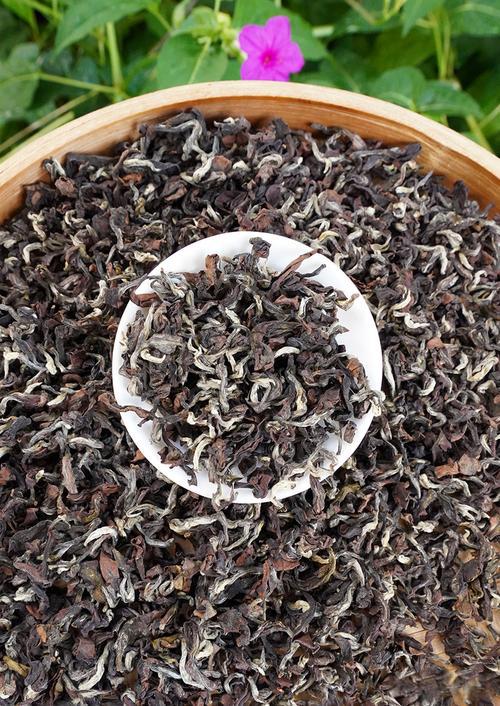
Oriental Beauty Tea(Dongfang Meiren): Taiwan’s Insect-Kissed Oolong Treasure
Key Takeaways
1. Oriental Beauty Tea, also called Pengfeng Tea or White Tip Oolong, is a rare fermented oolong originating from Taiwan, celebrated for its unique "honey fragrance" induced by small green leafhoppers.
2. Its distinct aroma (floral, fruity, honey-like) and sweet, mellow taste result from leafhopper saliva reacting with tea compounds—making it one of the few teas "crafted by insects."
3. With silvery white tips, green-brown leaves, and golden amber liquor, it stands out visually and sensorially.
4. The name "Oriental Beauty" was bestowed by Queen Victoria, highlighting its global acclaim since the 19th century.
5. Brewing follows oolong techniques: use warm teaware, 8g tea per standard vessel, 95°C+ water, and short initial steeps.
Oriental Beauty Tea: Taiwan’s Insect-Kissed Oolong Treasure
In the world of oolong teas, Oriental Beauty stands apart—not just for its elegance, but for a rare secret: it owes its magic to tiny insects. This prized Taiwanese oolong, also known as Pengfeng Tea or White Tip Oolong, is a story of accident turned legacy, blending nature’s ingenuity with human craftsmanship. Let’s explore its origins, uniqueness, and how to savor every sip.
1. Origins: A Happy "Pest" Accident
Oriental Beauty’s story began in the late 19th century in Beipu County, Taiwan. Local tea farmers faced a dilemma: their tea gardens were infested with small green leafhoppers, tiny insects that pierce tea leaves to feed. Unwilling to let their crops go to waste, they harvested the damaged leaves and sold them in nearby towns. To their surprise, the tea—with its unusual aroma and sweetness—became an instant hit.
This "pest problem" turned out to be a stroke of luck. The leafhoppers’ saliva, when mixed with the tea leaves’ natural chemicals, triggered a unique transformation: the leaves developed a rich, honeyed fragrance and mellow sweetness unlike any other tea. Today, this "insect-induced" process is carefully cultivated, with farmers even protecting leafhoppers to ensure the tea’s signature character.
2. What Makes It "Beautiful"? The Science of "Honey Fragrance"
Oriental Beauty’s most defining trait is its "honey fragrance" —a blend of ripe fruit, floral notes, and warm honey. This aroma is no accident: when leafhoppers bite the leaves, their saliva contains enzymes that break down the tea’s proteins and amino acids, converting them into volatile compounds like linalool (floral) and phenylethanol (honey-like).
Visually, it’s equally striking:
Leaves: A mix of green, brown, and silvery white tips (hence "White Tip Oolong"), reflecting its high fermentation (around 60-70%, making it a "heavily fermented" oolong).
Liquor: Golden amber, clear and bright, with a velvety texture.
Taste: Rich and sweet on the palate, with a long-lasting "huigan" (lingering sweetness) that coats the throat—no bitterness, just smoothness.
3. The Royal Naming: From Taiwan to Queen Victoria
The name "Oriental Beauty" carries royal prestige. Legend has it that in the late 19th century, a British tea merchant presented this unique tea to Queen Victoria of England. Enchanted by its golden color, delicate aroma, and sweet taste, the queen praised it as "a beauty from the East," thus giving it the enduring name we use today.
This royal seal of approval catapulted Oriental Beauty onto the global stage, making it one of Taiwan’s most famous tea exports.
4. How to Brew Oriental Beauty Tea
While Oriental Beauty is unique, its brewing follows oolong fundamentals (with slight tweaks to highlight its sweetness):
Teaware: Use a covered bowl or small teapot (clay or porcelain works best to retain aroma).
Warm the teaware first: Rinse with hot water to heat the vessel—this awakens the tea’s fragrance. Add leaves and gently shake to let them "breathe."
Tea amount: 8 grams for a standard 150-200ml teaware (adjust based on personal taste).
Water temperature: 95-100°C (high heat helps release its rich, sweet notes without dulling the aroma).
Steeping time:
First 3 infusions: 5 seconds (quick pour-in and out to avoid over-extraction).
Subsequent infusions: Add 5 seconds each round (Good quality Oriental Beauty can steep 5-7 times, with later infusions revealing deeper honey notes).
Pro tip: Sip from small cups to savor the evolving aroma—first floral, then fruity, finally lingering honey.
5. Beyond the Cup: Why It’s a Tea Lover’s Favorite
Oriental Beauty isn’t just a tea—it’s a symbol of Taiwan’s tea innovation. Its "insect-crafted" uniqueness makes it a conversation starter, while its smooth, sweet profile appeals to both new and seasoned tea drinkers. It pairs beautifully with light pastries (like almond cookies) or can be enjoyed solo, perfect for quiet afternoons or evening relaxation.
Oriental Beauty Tea is a testament to nature’s surprises and human adaptability. From a "pest crisis" to a royal favorite, it continues to captivate with its aroma, taste, and story. Brew a cup, and let this "beauty from the East" enchant you.
